
All categories
Featured selections
Trade Assurance
Buyer Central
Help Center
Get the app
Become a supplier

(3775 products available)















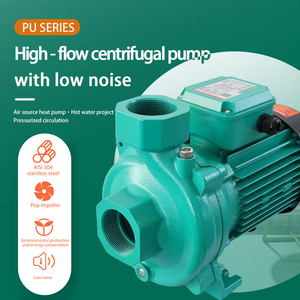
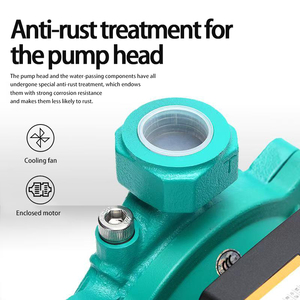
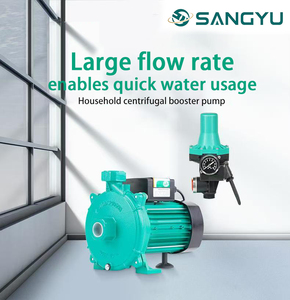
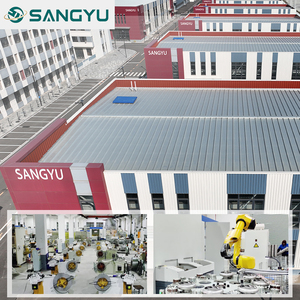
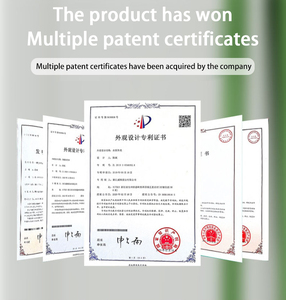













Horizontal end suction centrifugal pumps are available in multiple types that are determined by the materials they are constructed with, the fluids they operate optimally with, and the conditions under which they are to be operated. The main types of these pumps include:
These are the simplest types of centrifugal pumps. They are constructed with one impeller that gives them the ability to perform well in low-pressure applications. Single-stage pumps are mostly utilized in water supply systems, irrigation, and small-scale industrial operations.
Unlike the single-stage pumps, multi-stage centrifugal pumps are constructed with more than one impeller. These pumps are ideal for applications where more pressure or elevation is required. Multi-stage pumps are highly utilized in boiler feed systems, high-rise buildings, and long-distance water transfer.
These horizontal end suction pumps are designed to operate efficiently even when the pump is not filled with liquid. This is one of the varieties of pumps used in scenarios where the suction line might run dry as it has the ability to re-prime itself. They are mostly used in wastewater treatment, chemical processing, and swimming pool circulation.
These are horizontal end suction centrifugal pumps that use magnets instead of mechanical seals. As a result, these pumps have a reduced risk of leakage as they are mainly used to transfer hazardous or expensive liquids. Magnetic drive pumps are used in pharmaceutical, cosmetic, and specialty chemical industries.
These pumps are developed in accordance with the American National Standards Institute (ANSI) regulations. They are mainly used in chemical processing and refinery applications because of their standardized components that guarantee easy maintenance and replacements.
The key specifications of horizontal end suction centrifugal pumps include the following:
Flow rate is one of the key specifications of horizontal end suction centrifugal pumps. It is the speed at which the pump can transfer fluid, which is measured in GPM (gallons per minute) or cubic meters per hour (m³/h). Fordenes, a centrifugal water pump, has a flow rate of around 500 to 1000 m³/h, whereas a chemical pump has a flow rate range of 100 to 200 m³/h.
The head refers to the height to which a pump can raise liquid, which is measured in feet or meters. A centrifugal pump for high lifts or elevations should have a head of about 40 meters or more. Such a pump is ideal for mining or high-rise building applications. A pump that is suitable for low head applications should have a head of about 10-20 meters. Such pumps are used in irrigation and water supply.
Centrifugal pump efficiency determines how well a pump can convert the mechanical energy of the motor into hydraulic energy. High-efficiency pumps are known to reduce energy costs, as they tend to waste less electricity. Usually, a pump with an efficiency of 70% to 80% is considered good for industrial applications. The pumps used in critical applications often have around 80% to 90% efficiency to minimize energy wastage.
A horizontal end suction centrifugal pump's parts are usually constructed with stainless steel, bronze, plastic, or cast iron. These materials are selected based on the type of liquid being pumped and the environment the pumps will be working in. For example, stainless steel pumps come with corrosion resistance properties. As a result, they are commonly used to pump corrosive liquids in chemical plants and wastewater treatment facilities.
These pumps are constructed to operate at a specific temperature range, from as low as -20°C to as high as 150°C. Pumps meant for heated liquids are fabricated to handle high temperatures. Such pumps are used in oil refineries and power plants. On the other hand, low-temperature pumps are ideal for chilled water systems or HVAC.
The following are common scenarios where horizontal end-suction centrifugal pumps are commonly used:
These pumps are used to transfer water from sources like rivers, lakes, or underground aquifers to treatment facilities. They are also used to deliver treated water through pipelines to residential, industrial, and agricultural end users.
In fire protection systems, horizontal end suction centrifugal pumps are mainly used to deliver large volumes of water from reservoirs or booster pumps to power the fire suppression systems in high-rise buildings and industrial facilities.
These pumps are also used to move water from available sources like rivers or wells into irrigation systems. Those pumps help ensure crops receive the necessary amount of water for healthy growth, especially in dry seasons.
In Heating, Ventilation, and Air Conditioning (HVAC) systems for large buildings or industrial facilities, these pumps help circulate hot water, chilled water, and steam throughout the heating and cooling systems.
Mining companies use these pumps to handle the enormous volumes of water that must be removed from underground mines to keep working areas dry and safe.
These pumps are applied in the chemical processing industry to transfer chemicals and other liquids. They are used because they can be constructed with specialized materials that will prevent deterioration from harmful chemicals.
These pumps are used in the oil and gas industry to move crude oil, natural gas liquids, and water used in the extraction process across pipelines.
Consider the following factors to effectively decide on the best horizontal end suction centrifugal pumps for specific needs:
Centrifugal pumps are the most suitable for pumping thin, low-viscosity fluids. These include water, chemicals, oils, and other liquids. However, they are not the ideal choice for high-viscosity fluids because such fluids do not flow easily through the pump. Also, these pumps are unsuitable for pumping slurries because suspended solids can damage the pump components.
Determine the required flow rate for the horizontal centrifugal pump. A centrifugal pump that has a lower flow rate than required will be able to handle the pumping needs but will frequently experience overheating or damage. On the other hand, a pump that has a higher flow rate than what is required will handle the needs easily but is likely to incur unnecessary energy costs.
When head pressure is too high for a centrifugal pump, the pump will experience cavitation. On the other hand, when it is too low, lack of sufficient hydraulic energy will make it impossible for the pump to perform its basic functions. Therefore, it is important to ensure that the centrifugal pump chosen is able to withstand both the head pressure and temperature of the fluid being pumped.
Centrifugal pumps are manufactured with varying materials to suit the needs of diverse pumping applications. Stainless steel pumps are the most commonly used due to their resistance to corrosion and durability. These pumps are ideal for chemical processing and wastewater applications. There are also other types of bronze and plastic pumps. These pumps are also highly resistant to corrosion. Therefore, they are ideal for aggressive chemicals.
Centrifugal pumps are available in varying rotational speeds, which are mostly expressed in revolutions per minute (RPM). The available pump speed options are 500 to 3,600 RPM. Generally, higher-speed pumps are more efficient in terms energy. However, they are likely to incur the cost of pump damage. Therefore, ensure that the chosen pump speed is compatible with the required motor power.
A1. Horizontal end suction centrifugal pumps are contrived with a simple maintenance design. Therefore, regular maintenance is easy and less time-consuming. Owners of these pumps should conduct regular inspections, lubrication, and monitoring of key parameters like vibration, temperature, and flow rate. They should also replace worn-out parts immediately to avoid further damaging the pump. Moreover, your maintenance routine should consist of cleaning the pump and checking for any signs of corrosion or leakage. Regularly inspect and, if necessary, replace components such as bearings, seals, and impellers. In addition, verify the alignment between the pump and motor to avoid undue strain on the pump components.
A2. These pumps are widely utilized in agriculture for irrigation systems, in industries for chemical processing, and in buildings for HVAC systems. They are also used in mining for mineral slurry processing, fire protection systems, and the oil and gas industry for the transportation of liquids. These pumps are ideal for power plants for boiler feedwater and condensate extraction. Furthermore, they are commonly used in water supply and wastewater treatment facilities.
A3. Several factors affect the efficiency of these pumps, including pump design, impeller type, and size, as well as the material of the construction. Others include the operating conditions, type of fluid being pumped, and hydraulic losses.
A4. The common indicators of pump failure include abnormal noises, vibrations, and fluctuations in pressure or flow rate. Other signs are leaks, corrosion, and overheating and high energy consumption. Additionally, a noticeable drop in the quality of service can point to pump failure.
A5. Yes, these pumps can handle corrosive liquids only if they are constructed with materials that have high corrosion resistance properties. These materials include stainless steel, plastic, and bronze.